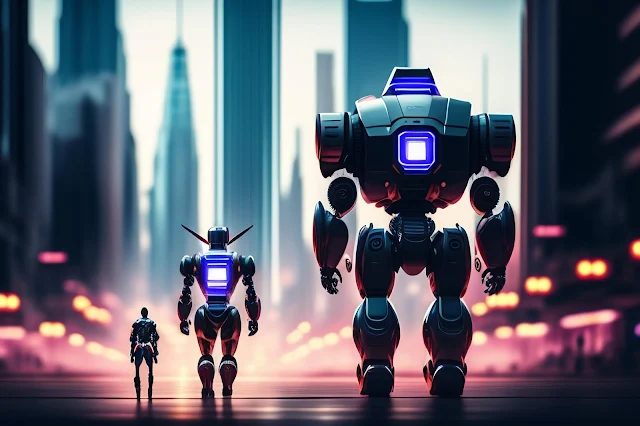Introduction of Artificial Intelligence Growth
 |
| Source: freepik.com |
Artificial Intelligence Growth has come a long way to the path of success from its inception, with key achievements that have redefined the way we interact with technology and the world around us.
This article delves into the fascinating world of Artificial Intelligence Growth From Turing to Transformers which explores AI from its root beginning to the contemporary era dominated by Transformers and deep learning.
Concept of AI Era: Artificial Intelligence Growth
The root of Artificial Intelligence Growth can be measured from the mid-20th century when the British mathematician and computer scientist Alan Turing proposed the concept of a machine that could think like a human. Alan introduced a test “Turing’s Test” in 1950, to check whether a machine’s intelligence level can think as same as a human's or not.
The test includes two humans and one computer, one human is considered the evaluator while the other human and computer as respondents. The evaluator asks some questions to both respondents i.e., human and computer within a specific area of the subject and a time limit. Finally, the evaluator is asked to judge both respondents' answers and identify which respondent was human and which was computer.
The test is repeated umpteen times and the evaluator makes an attempt to distinguish between the human and the machine, if the machine makes conversation like a human without being detected as a machine, then the machine is demonstrated as a human.
Early Artificial Intelligence Growth: Logic and Expert Systems
The AI Winter: Setbacks and Resilience
Despite Artificial Intelligence Growth, AI faced umpteen challenges in the late 20th century, calling it as “AI Winter”. Funding dried up, and optimism waned due to unmet expectations and technological limitations. However, dedicated researchers and the occasional breakthroughs ensured that AI would eventually re-emerge stronger.
The Rise of Machine Learning
As technology is upgrading day by day the subset of Artificial Intelligence i.e., Machine Learning has become one of the reasons for Artificial Intelligence resurgence. Machine Learning algorithms allow us to learn from data and adapt without explicitly programmed in the field. The success of algorithms includes decision tree algorithms and neural networks, paving the way for more advanced techniques.
Deep Learning: The Transformer Revolution
In the industry of automation driving, in past years, Machine Learning with its Neural Networks combined with multiple layers has become the driving force behind AI advancement. In 2017, the Transformer architecture, introduced in a groundbreaking paper titled "Attention Is All You Need" has become the game-changer. It specialized in Natural Language Processing and enabled unpredictable tasks such as machine translation and Chatbots.
Transformers in Action: AI's Multifaceted Applications
Changes in action have not only transformed Natural Language Processing but have extended their positive impact in various domains such as games, text-to-speech, web development, etc. They have been utilized for Image Recognition, Reinforcement Learning, and even Scientific Research. Their versatility and achievements have redefined what’s next possible in the AI world.
The Future of AI: Beyond Transformers
As AI raises its role in industry, one question always comes up “What lies beyond Transformers?” Researchers are already exploring novel architectures and paradigms like GPT-4, neural architecture search, and quantum computing. The future relies on AI systems that are even more capable, efficient, and adaptable.
Conclusion
From the fascinating idea of Alan Turing to the transformative power of Transformers, the journey of artificial intelligence has become remarkable in a short time. Each era has built upon the last, pushing the boundaries of what machines can do. As we venture into the future, AI's evolution shows no signs of slowing down, and the possibilities it holds are limited only by our imagination and ingenuity.










1 Comments
Khudoos! Just uncovered the facts behind the AI.
ReplyDelete